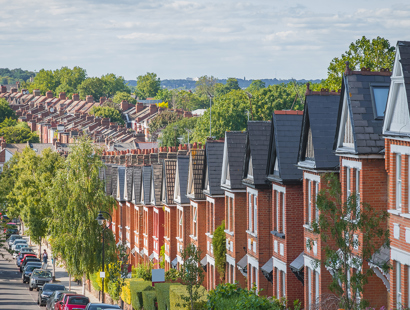
Building Safety Act Higher-Risk Building update—key dates and potential criminal sanctions
Russell-Cooke senior associate explores the far-reaching implications of the Building Safety Act 2022 and the deadline for Higher-Risk Buildings to register with the new Building Safety Regulator, while shedding light on key definitions, accountabilities, and criminal sanctions for non-compliance.
The Building Safety Act 2022 (BSA) is the legislative response to the tragic fire at Grenfell Tower on 14 June 2017. It is an ambiguous piece of legislation spanning 230 pages, 171 provisions and 11 schedules. Its scope is far-reaching.
Much focus has been on the redress available to leaseholders for the costs in remediating defects that pose a building safety risk for construction or conversion works carried out in the period of 30 years ending on 28 June 2022. Our brief articles outlining the approach taken by the First-tier Tribunal on Remediation Orders and Remediation Contribution Orders under the BSA can be found here and here. Although the Tribunal’s determinations are not binding precedents, these early decisions do provide helpful clarity as to how some of the provisions of the BSA are being interpreted in practice. Further legislative changes have also been made on this issue. Our brief outline of some key changes, including a new prescribed form for the much debated Landlord’s Certificate, can be accessed here.
The new regime covers existing and yet to be completed Higher-Risk Buildings. This update focuses on existing and occupied Higher-Risk Buildings only, as introduced by Part 4 of the BSA, which also adds to the existing requirements of the Regulatory Reform (Fire Safety) Order 2005 (FSO).
The key part of the regime requires in-scope buildings to register with the new Building Safety Regulator (BSR) before 1 October 2023. The Government has issued guidance on the deadline and requirements; see here. Failure to comply with some of the new regime’s requirements will carry criminal liability.
Although not all of the BSA’s provisions or the regulations supplementing them have come into force as at the date of this article, its amendments to the FSO will come into force on 1 October 2023 and it is anticipated that the new regime will take effect on that date, in line with the Government’s deadline for the registration of Higher-Risk Buildings. The position may develop further as the provisions come into force and more changes are introduced.
We set out below some relevant key definitions contained in Part 4 of the BSA and the FSO before we go on to highlight the duties that carry criminal sanctions.
Higher-Risk Building
Part 4 of the BSA defines a 'Higher-Risk Building' as a building in England that is at least 18 metres or seven storeys high and contains two or more residential units (HRB). This includes mixed use buildings such as a shopping centre with two or more residential units above it, as well as boarding or student accommodation, provided that they meet the minimum height and residential element criteria.
However, a building that comprises entirely the following is not treated as a HRB for the purposes of Part 4 of the BSA:
- a care home
- a hospital
- a secured residential institution such as a prison
- a hotel
- military barracks
- living accommodation provided by the Ministry of Defence
- living accommodation for HM forces, visiting forces, or an international headquarters or defence organisation designated for the purposes of the International Headquarters and Defence Organisations Act 1964
There are regulations as to the status of a building’s structure, and independent sections may, in certain circumstances, be treated as a building. As such, in some cases, debates may arise as to whether a building, or a part of it, is a HRB.
The Government has also issued detailed guidance with examples of HRBs, which can be found here.
Building safety risks
In Part 4 of the BSA, a building safety risk means a risk to the safety of people in or about a building arising from the spread of fire, structural failure or other prescribed matter.
Accountable Person
An Accountable Person for a HRB (AP) as defined in Part 4 of the BSA is a person who holds a legal interest in or has an obligation under a lease or by enactment to repair the common parts of the building.
Examples of APs are:
- freehold or estate owner
- landlord
- named manager or management company that is a party to the lease
- right to manage company under the Commonhold and Leasehold Reform Act 2002
- commonhold association
Principal Accountable Person
The BSA imposes additional duties on a Principal Accountable Person (PAP). A PAP is the AP if there is only one AP in the HRB in question. If there is more than one AP, then the PAP is the AP for the relevant parts of the structure and exterior of the building.
There can be a number of APs in a HRB. As such, we anticipate issues arising as to which party is the PAP in some circumstances. The BSA provides a mechanism to ascertain this issue by way of an application to the First-tier Tribunal for a determination.
Responsible Person
Under the FSO, the Responsible Person, usually the owner or a person who has control of the premises and common parts, in connection with the carrying on of a trade, business or undertaking, has certain duties in respect of fire safety. Whilst an AP under the BSA is more than likely to be a Responsible Person under the FSO, the reverse may not always be the case.
Criminal sanctions for failure to comply with certain provisions in Part 4 of the BSA and the FSO
Bearing in mind the imminent deadline for the registration of HRBs on 30 September 2023 and the intended start of the new regime to commence on 1 October 2023, we set out below some key requirements that carry criminal sanctions on APs and PAPs under the BSA and the Responsible Person under the FSO.
If a PAP fails to do the following without reasonable excuse they will have committed an offence and will be liable to a fine and/or imprisonment of up to two years if found guilty:
- register a HRB with the BSR before it is occupied (for existing and occupied HRB registration needs to take place before 1 October 2023);
- apply for a building assessment certificate within 28 days of the BSR’s direction requiring them to do so;
- display specified information and documents in a conspicuous position in the building.
If an AP fails to do the following without reasonable excuse they will also have committed an offence and will be liable to a fine and/or imprisonment of up to two years if found guilty:
- when they cease to be responsible for the building, give prescribed information and a copy of any prescribed document to the BSR and the new AP.
- carry out the remedies specified in a compliance notice issued by the BSR on contravention of the requirements on APs in Part 4 of the BSA such as assessing and managing building safety risks; developing a building safety case report, residents’ engagement strategy and complaints procedures etc.
In addition, if an AP fails to do the following without reasonable excuse they will also have committed an offence and will be liable to a fine if found guilty:
- give prescribed information on a building safety risk to the BSR by the prescribed time in a specified way.
From 1 October 2023, if a Responsible Person fails to do the following, and that failure places anyone lawfully on the premises or in the immediate vicinity of them at risk of death or serious injury in case of fire, they will have committed an offence and will be liable to a fine and/or imprisonment of up to two years if found guilty:
- give residents comprehensible information about fire safety matters for buildings with two or more domestic premises;
- when they cease to be responsible for the building, give the new Responsible Person fire safety information;
- ascertain whether there are one or more APs and co-operate with each AP for premises which consist of or include a residential unit in a HRB.
As the selection of the above new legislative changes demonstrates, this area of law continues to develop and pose challenges in the daily operation of building safety management. It is advisable for landlords, developers, agents and other stakeholders to ensure requisite documents are compiled and relevant strategies, procedures and safety cases are developed as soon as possible prior to the coming into force of the relevant provisions, as well as keeping a close watch on new legislation to come in the future.
Note: The Building Safety Act 2022 (Commencement No.5 and Transitional Provisions) Regulations 2023 bring into force on 1 October 2023 some of the provisions mentioned in this article, see here.
Get in touch
If you would like to speak with a member of the team you can contact our property litigation solicitors by telephone on +44 (0)20 3826 7525 or complete our enquiry form.




